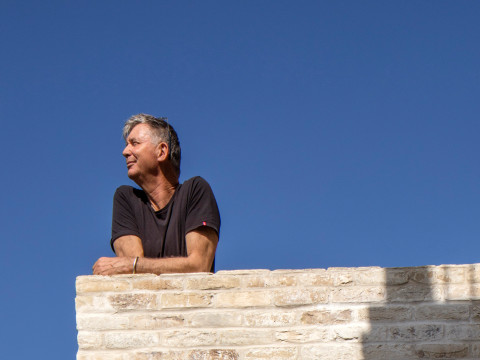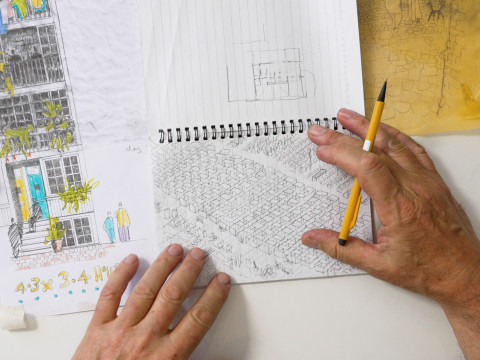
Architecture and Freedom: a changing connection
By Owen Hopkins
Published on 1 September 2015
With architectural production becoming ever more beholden to the needs of capital and the building industry, the role of the architect is changing, says our curator. Owen Hopkins introduces the critical issues informing our new season of events.
Architecture is, fundamentally, a public art. It sits squarely on the threshold where the private interests of the client meet the public effect of buildings: visual, programmatic and environmental. At its root, the role of the architect is to negotiate that relationship through the process of design.
But things are changing as architectural production is becoming ever more beholden to the needs of capital and the building industry. One of the chief aspirations of Modernist architecture, particularly after the Second World War, was to prioritise its public aspect, and establish it as a moral position. Architecture was conceived as an instrument of social progress, with the capacity to improve people’s lives. However, by the 1970s – amid the apparent failures of many Modernist housing estates and the dissolution of the post-war settlement to which Modernism had become aligned – this argument was firmly under attack, and was finally repudiated by Postmodernism from the 1980s.
Today, architecture is in thrall to private interests and the needs of capital to a greater degree than ever before. Many architects have found their traditional remit increasingly encroached upon by the specialisation of different roles within the building industry, driven largely by the desire to minimise "risk". The impacts of this are felt not just by the architectural profession, but by the broader relationship between the public and the built environment. It has potentially profound implications on the very nature of society and our political and economic futures. It is already beginning to be seen: from the ever-increasing erosion of public space to the proliferation of "exclusive" residential towers across London.
Architecture is in thrall to private interests and the needs of capital to a greater degree than ever before
This context is the backdrop to our new season of events at the Royal Academy, which provides platform for discussion about some of the most critical issues around architecture’s future.
The season is bookended by lectures by four of the world’s most innovative architectural thinkers and practitioners: Jürgen Mayer H, Patrik Schumacher, Reinier de Graaf and the newly elected Royal Academician, Farshid Moussavi RA. Each will reflect on the meaning of freedom for architecture in relation to their work and ideas.
Two debates, intended to reframe and refocus our attention on two pressing issues, Spaces of Freedom and architectural ethics, will see expert speakers from both inside and outside the architectural profession offer a range of insights.
The season culminates with a multidisciplinary symposium on Freedom and Creativity that aims to expand the focus of other areas of cultural practice and production. Amid creativity's ever-increasing commodification, how are our understandings of creative freedom and autonomy changing in relation to the pervasiveness of the digital sphere with its new creative tools and platforms for dissemination? Do new cultural understandings of freedom force us to reassess political ones?
Not content with just working out the economic, regulatory or social, limits of architectural practice, we hope this season will offer an important contribution to the debate about the relationship of architects and architecture to the political and economic systems that governs us all, and help further the vital process of negotiating its future.
Owen Hopkins (@owen_hopkins) is the RA’s Architecture Programme Curator.
Find out more about Architecture events at the Royal Academy.
Related articles

Crunch: inside the first Architecture Window display
14 February 2024

RA Architecture Prize Winner 2023: Shane de Blacam
1 September 2023

Introducing Bêka & Lemoine
9 August 2023

In the studio: Peter Barber RA
27 July 2023

